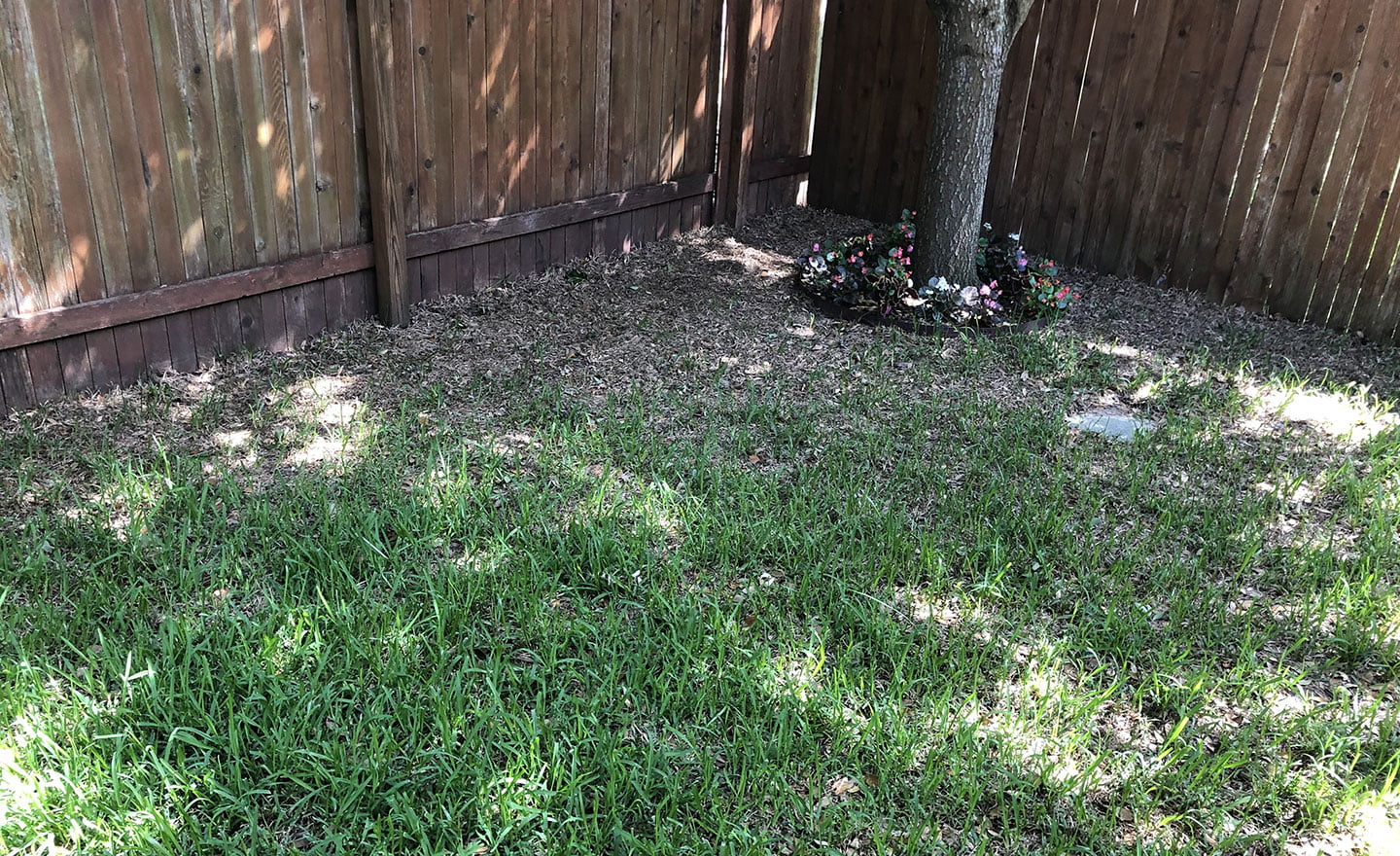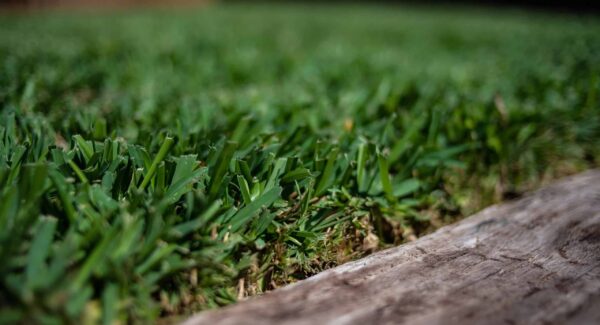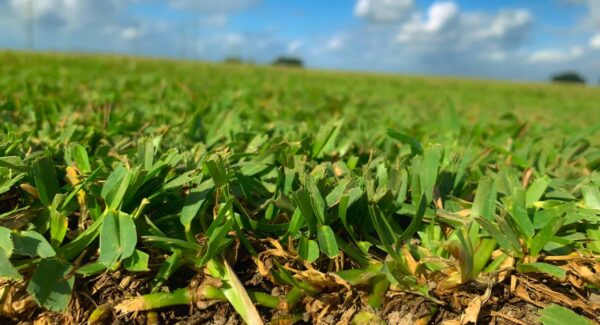Sod Thinning & Going Bare

We do not carry a variety of grass that will grow in zero sunlight. If you have shade in your yard, and your sod begins to thin out and go bare in the shadier areas, you most likely have too much shade for the sod variety installed.
Many warm-season turfgrasses need at least 5 hours of some combination of heavily dappled sunlight and direct sunlight. There are some varieties that are more shade-tolerant than this; however, shade-tolerance will vary greatly depending on different variables.
If you observe your lawn thinning or disappearing in densely shaded areas of your yard, we suggest that you gauge and record the amount of direct and heavily filtered sunlight you receive in the shadiest areas. If you are not receiving approximately 4+ hours of direct and heavily dappled sun in these areas of your lawn, you may need to raise and thin out the tree canopies to allow more sun to filter through.
To be considered “heavily“ dappled sunlight, about 40% of the shaded area needs to be receiving sunlight for at least 3-4 hours per day, depending on the grass cultivar installed. Anything less, and you may see issues with the sod establishing its root system, remaining healthy, thinning, and going bare over time.
As mentioned before, these sun requirements can vary quite a bit. It is always safer to expect your lawn to need the amount on the higher end of the estimated specs, unless you are receiving about 3 to 5 hours of direct sunlight, depending on the variety, from around 10 a.m. – 4 p.m (most elevated levels of UV exposure).
The duration of sunlight needed daily will depend on:
- The direction your lawn is facing
- Time of day the most sunlight is received
- How heavily the sun is filtering through the trees
- Nutrients in the soil
- Irrigation method & schedule
- Cultural practices
- Mow-height
Also, keep in mind the difference between “survive” and “flourish.” For example, suppose you are receiving 3 hours of moderate dappled sunlight. In that case, the Palisades Zoysia may not be quite as dense in these areas as in sections receiving 4 hours of heavily dappled sunlight or 3 hours of full sun. Further, letting your grass grow on the taller end of the recommended mow-height will help the grass, as the blades can reach more sunlight, and there is a more exposed blade surface to absorb the nutrients from the sun.
Common Causes:
- Lack of sufficient sunlight
- Lack of nutrients in soil
- Mow-height too low
Resolutions:
- Thin out tree canopies
- Raise tree canopies
- Keep grass at taller mow-height
- Test soil & make soil amendments accordingly
- Maintain proper irrigation schedule
- Plant other shade-tolerant plants
- Xeroscape
- Mulch





